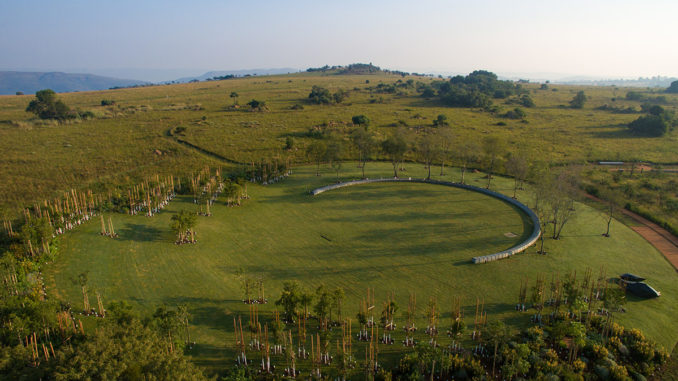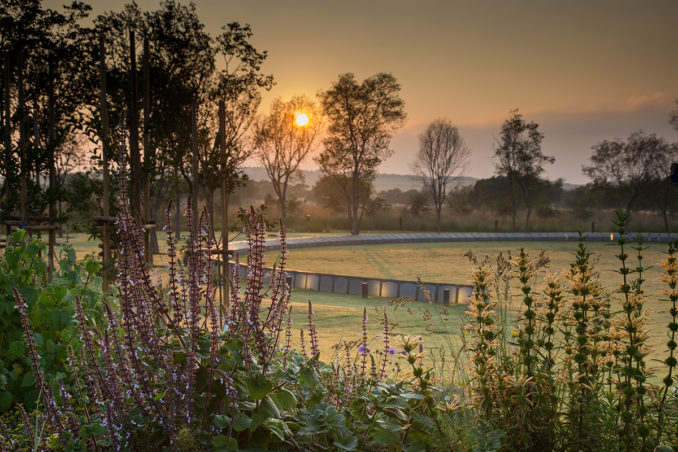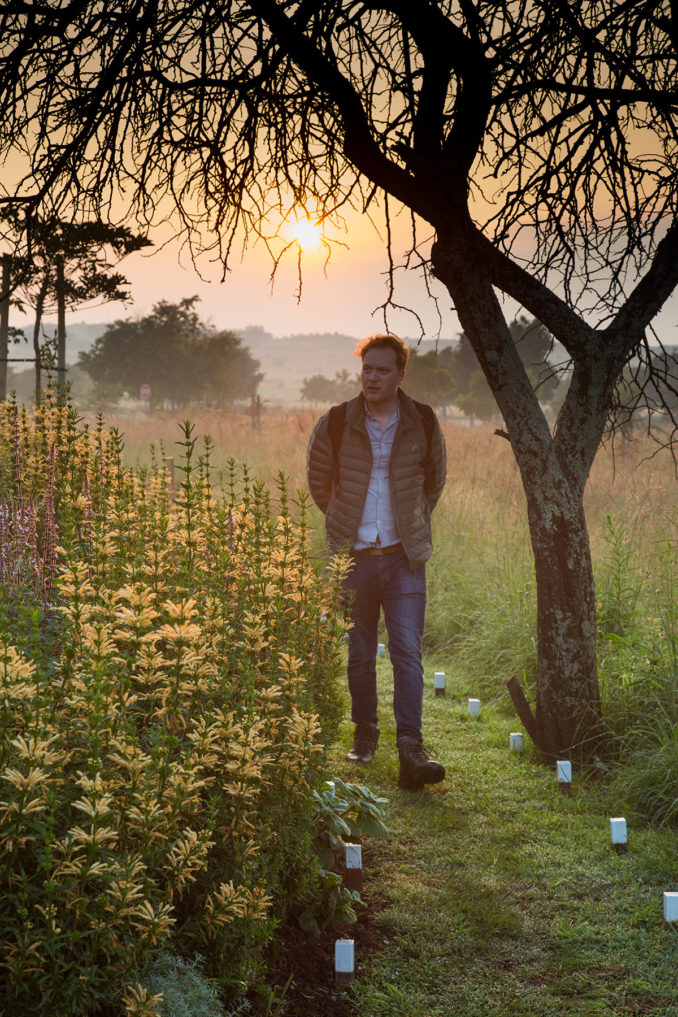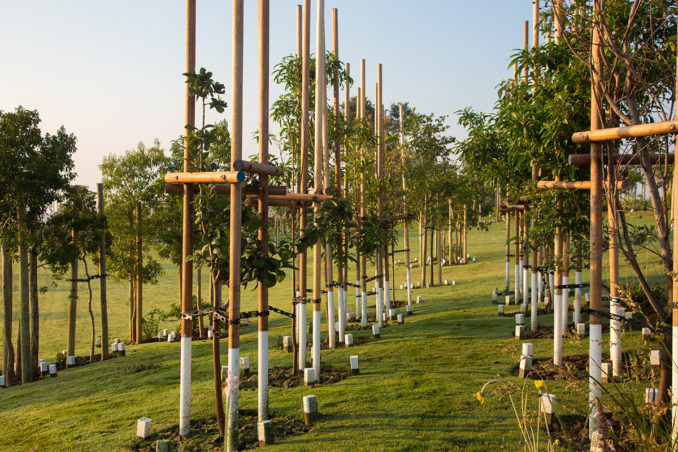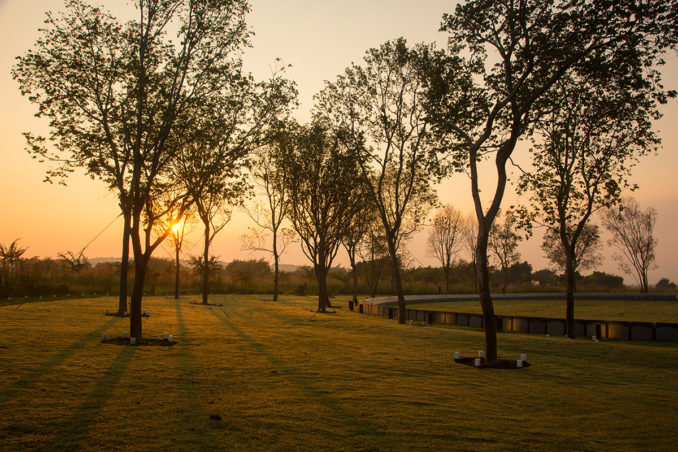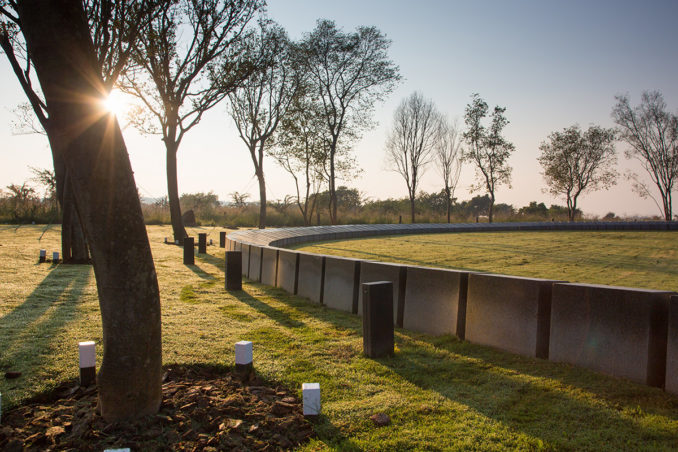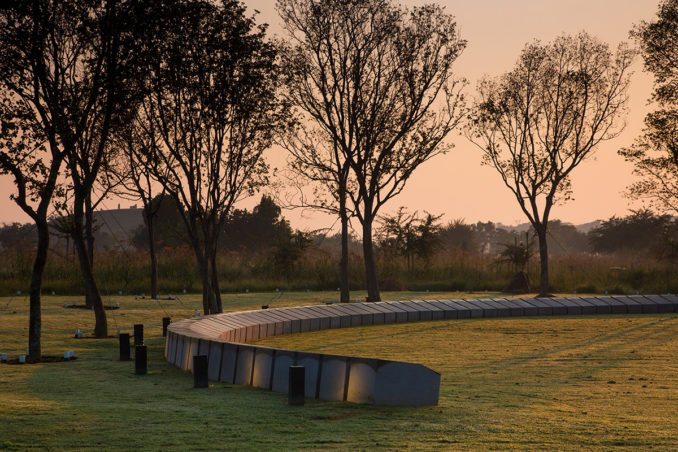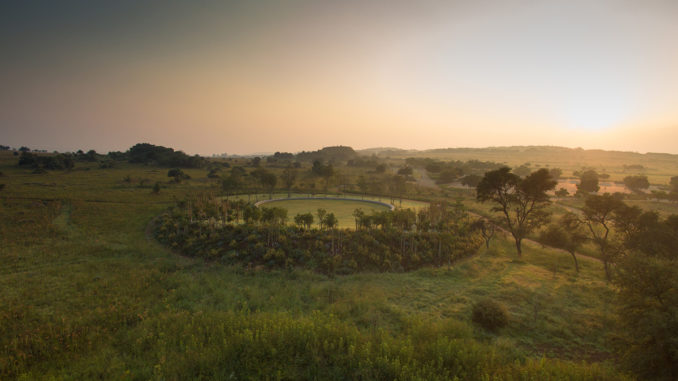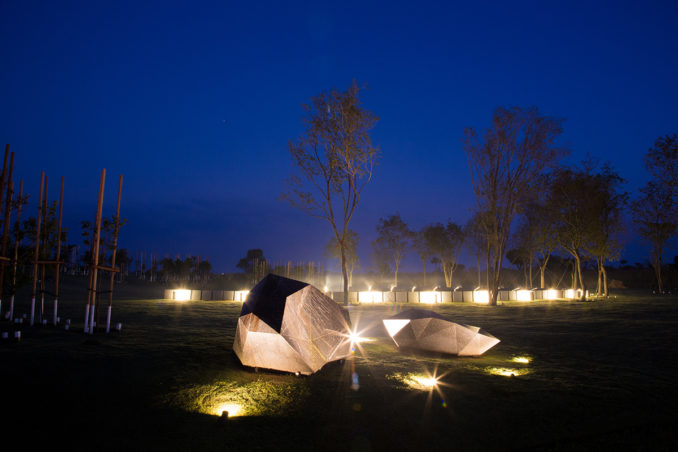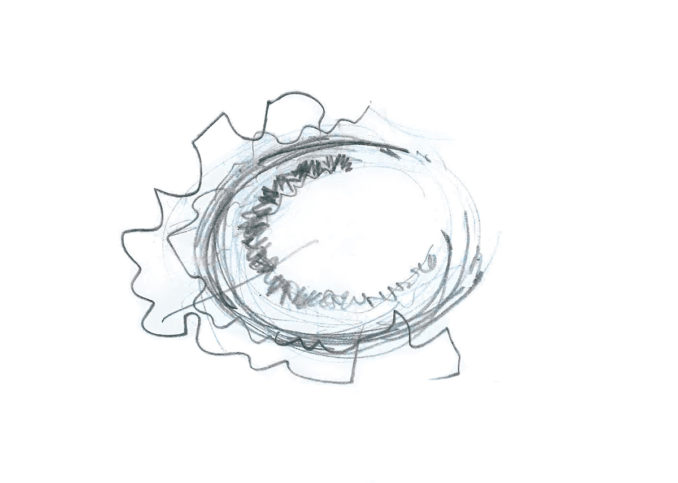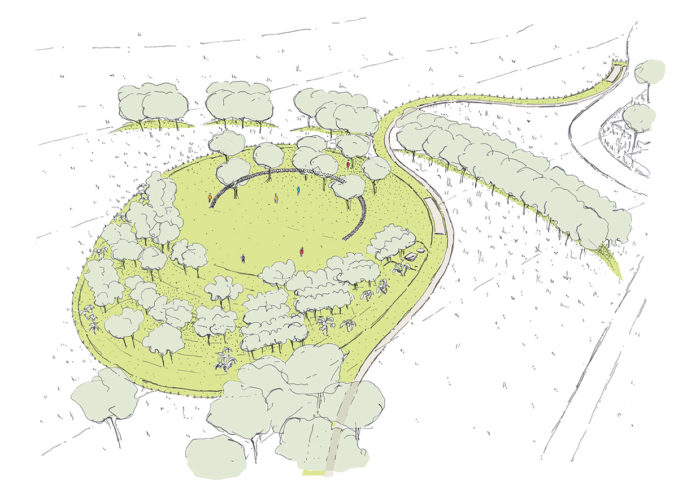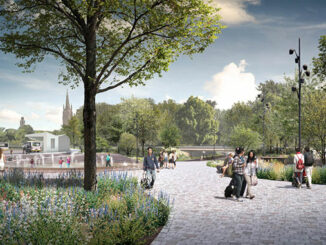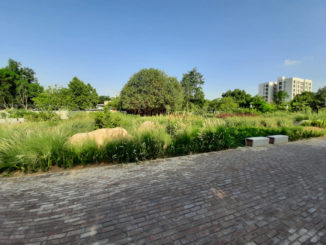Located near the Sterkfontein Caves in the Cradle of Humankind, a World Heritage Site about 40 kilometres from Johannesburg, South Africa, Stone Park is a newly developed gathering place at the Maropeng Visitor Centre.
Close by the set of limestone caves, which are of continuing interest to paleo-anthropologists, the important archaeological sites of Kromdraai and Swartkrans are also to be found. Taken together, they represent one of the richest known concentrations of early hominid remains in the world. They hold the fossilised remains of our ancestors who made a home for themselves there and produced the earliest stone tools found in Southern Africa. The rich finds have called to question whether this very place may hold the key to our human origins. The sites have also engendered numerous studies on fossilised fauna, wood as well as stone tools which were made, used and discarded there in the distant past.
Maropeng, in Setswana, one of South Africa’s eleven official languages, means returning to the place of origin.
Stone Park is a picnic place outside and away from the existing museum complex. It is earmarked with the theme and investigation of human impact and the first of several insertions and delimited places in the historical landscape. Here, some of the artefacts inside the exhibition entrance building or Tumulus are to be relayed and established in order to unlock engagement with a significant cultural environment within their confines, but also along the meandering walkways connecting them.
A sheltered oval lawn for picnicking and events is embraced by a curved line of trees to the north. They form a protecting threshold but also allow for framed views towards the Tumulus building and the untouched veld around it. The southern edge is enclosed in a berm, a moulded shape which could be utilised as an amphitheatre for outdoor events. The formal planting of several small ‘cathedrals’ of trees and the existing indigenous vegetation will create shelter-belts from where the surroundings can be enjoyed and contemplated from protected pockets of calmness in an otherwise windswept landscape that would leave visitors totally exposed to the elements.
The project aims to challenge typical museum mechanisms of explanation, for instance the use of dioramas. Human impact is simply explained by two carefully placed stone narratives within the space – an archaeological stone tool sculpture at the entrance, recalling the implements of a past civilisation, and a new seating ring defining and marking the contemporary intervention at the heart of the same site.
The Cradle of Humankind is rich in flowering plants with many geophytes that require regular fires for their propagation. Most of the woody plants are found in ravines and dolomitic sinkholes where deep soils and cool, moist conditions provide ideal habitats and the destructive effects of fire and frost are minimised. In the wider context a remediation project addresses the rehabilitation of the grasslands which were significantly disturbed during the construction of the Tumulus. Located in the Bakenveld biome, the planting pallet makes use of locally indigenous forbs and trees that reflect and complement the biodiversity of the surrounds. Intensive planting is restricted to the outside of the berm where the trees will eventually grow into a small forest; the temporary flowering annuals will be overtaken by indigenous grasses; the natural landscape and the insertions will be woven together.
Over time human impact could be erased by natural decay and growth and the remains of the low stone ring and the small but formal indigenous tree ‘cathedrals’, will become the sole evidence of human interference, like the stone tools which were scattered there by our forebears millennia ago.
Stone Park – Maropeng, South Africa
Images: Courtesy of GREENinc Landscape Architects
Credits: All design work by GREENinc Landscape Architects, Information piece credit: Office 24/7.
Location: Maropeng Visitors Centre, Gauteng, South Africa

